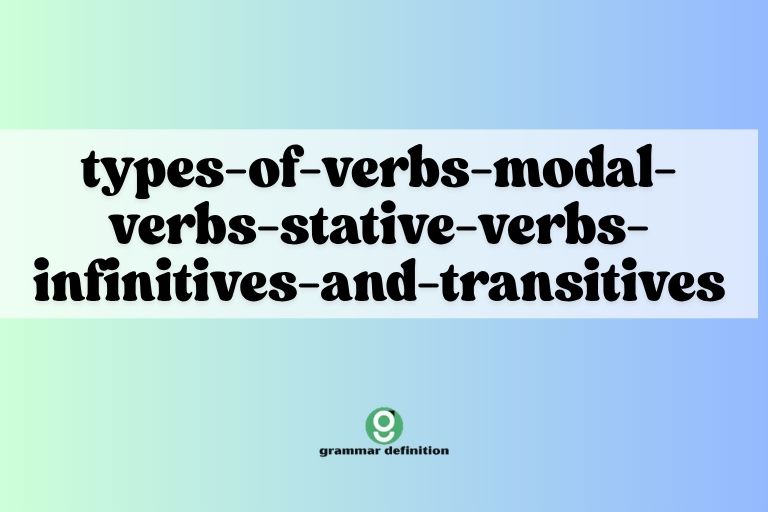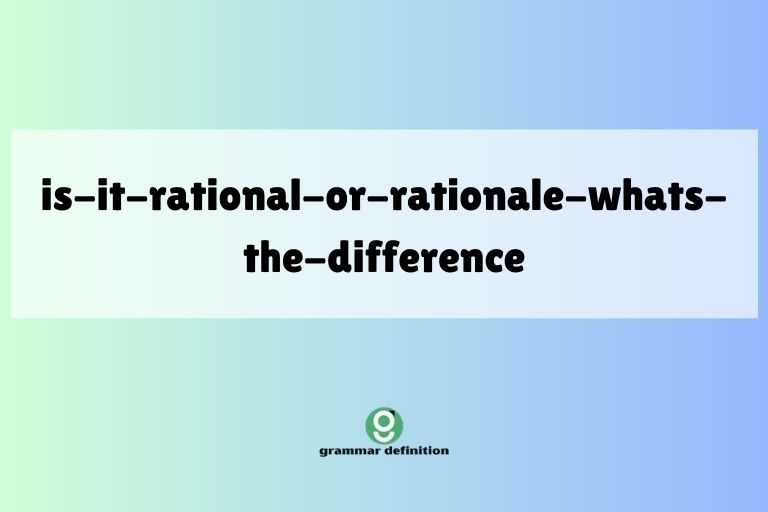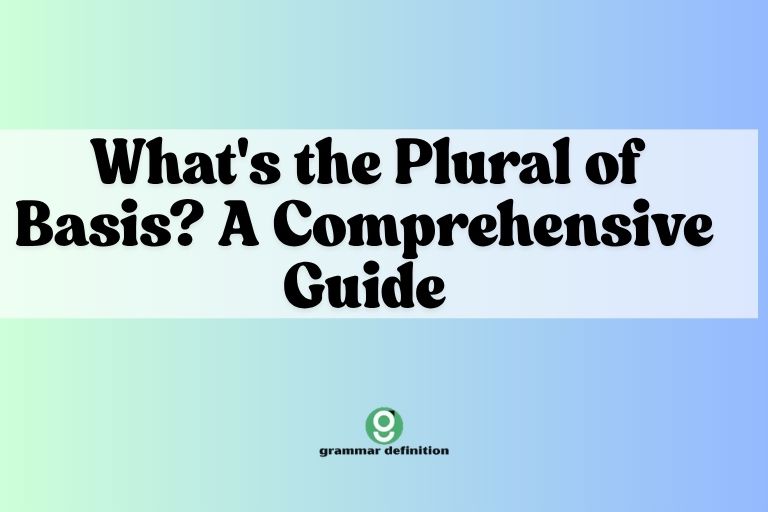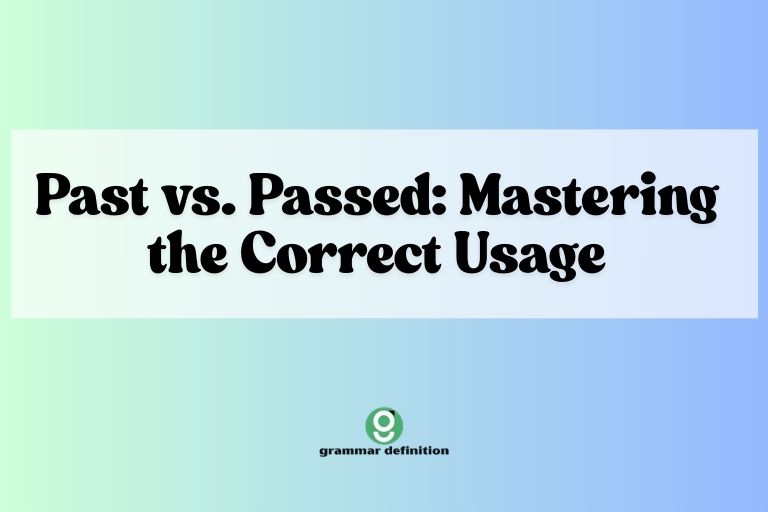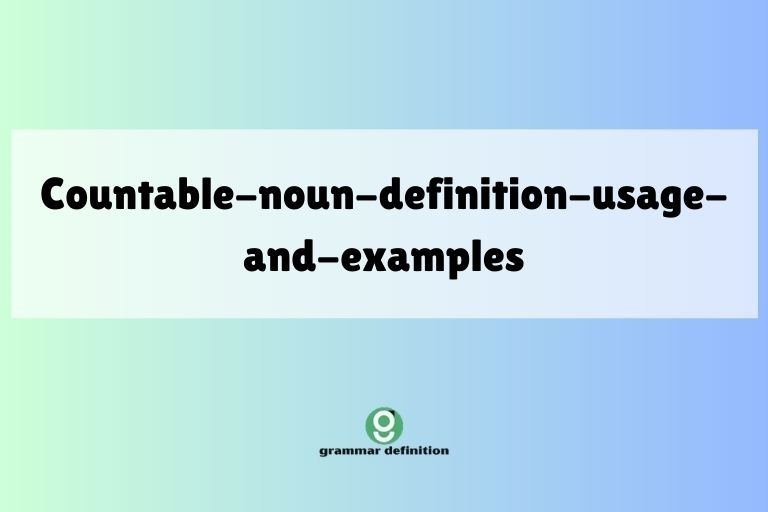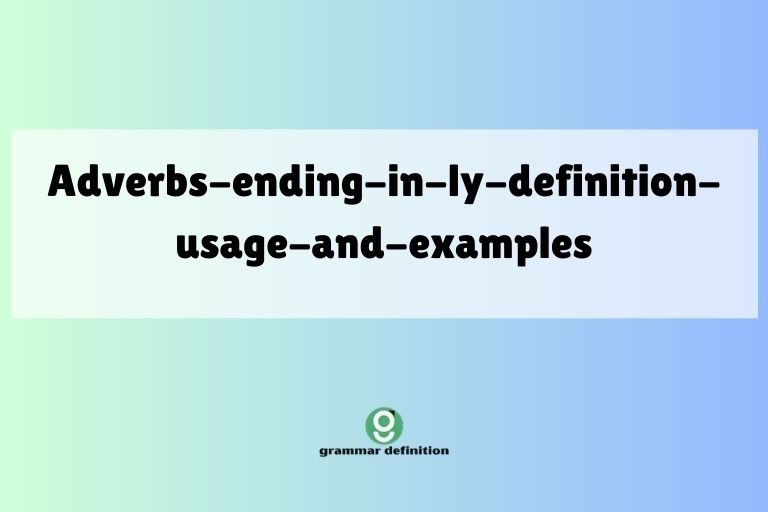Shook vs. Shaken: Mastering the Past Tense of “Shake”
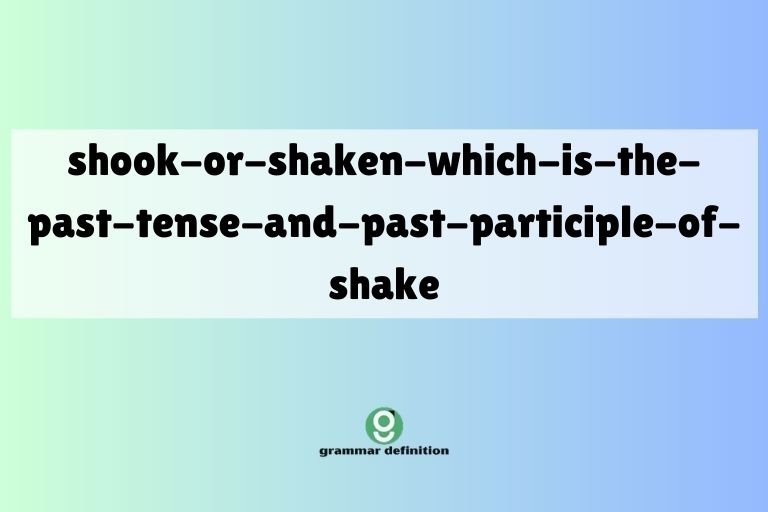
Understanding the difference between “shook” and “shaken” is crucial for accurate and effective communication in English. As the past tense and past participle of the verb “shake,” these words play distinct roles in sentence construction.
This article provides a comprehensive guide to mastering their usage, covering definitions, examples, common mistakes, and practice exercises. Whether you’re a beginner or an advanced learner, this guide will help you confidently use “shook” and “shaken” in your writing and speech.
This article is designed to benefit anyone who wants to improve their understanding and use of English grammar, particularly those learning verb conjugations and the nuances of past tense and past participle forms. By the end of this guide, you’ll have a solid grasp of when to use “shook” and when to use “shaken,” enhancing your overall language proficiency.
Table of Contents
- Definition of “Shake,” “Shook,” and “Shaken”
- Structural Breakdown: Simple Past vs. Past Participle
- Types of “Shake” and Their Usage
- Examples of “Shook” and “Shaken” in Sentences
- Usage Rules for “Shook” and “Shaken”
- Common Mistakes with “Shook” and “Shaken”
- Practice Exercises
- Advanced Topics: Subjunctive Mood and Idiomatic Expressions
- Frequently Asked Questions
- Conclusion
Definition of “Shake,” “Shook,” and “Shaken”
The verb “shake” is an irregular verb that describes a rapid, forceful movement back and forth or up and down. Understanding its different forms is essential for correct usage.
Let’s break down each form:
Shake (Base Form)
The base form, “shake,” is used in the present tense, infinitive form, and with auxiliary verbs like “will,” “can,” or “should.” It signifies the action of causing something to move quickly and repeatedly.
Shook (Simple Past)
“Shook” is the simple past tense form of “shake.” It indicates that the action of shaking happened at a specific point in the past. It’s used to describe a completed action.
Shaken (Past Participle)
“Shaken” is the past participle of “shake.” It’s used with auxiliary verbs like “have,” “has,” or “had” to form perfect tenses (present perfect, past perfect, future perfect) and in passive voice constructions. It describes an action that has been completed, often with an emphasis on the resulting state.
Structural Breakdown: Simple Past vs. Past Participle
The key difference between “shook” and “shaken” lies in their grammatical function within a sentence. “Shook” stands alone as the main verb in the simple past tense, while “shaken” requires a helping verb to form perfect tenses or passive constructions.
Simple Past Tense with “Shook”
The simple past tense describes a completed action in the past. The structure is straightforward: Subject + Shook + (Object/Complement). For example, “The earthquake shook the entire city.”
Perfect Tenses with “Shaken”
Perfect tenses indicate actions completed before a specific time. “Shaken” is used with “have,” “has,” or “had” to form these tenses. The structure is: Subject + Have/Has/Had + Shaken + (Object/Complement). For example, “I have shaken the bottle to mix the ingredients.”
Passive Voice with “Shaken”
In the passive voice, the subject receives the action. “Shaken” is used with a form of the verb “to be” (is, are, was, were, been, being). The structure is: Subject + Is/Are/Was/Were/Been/Being + Shaken + (by + Agent). For example, “The tree was shaken by the strong winds.”
Types of “Shake” and Their Usage
The verb “shake” can be used in various contexts, each influencing the specific meaning and application of “shook” and “shaken.” Understanding these contexts helps in choosing the correct form.
Physical Shaking
This refers to the literal act of moving something back and forth or up and down. Examples include shaking a bottle, shaking hands, or shaking one’s head.
Emotional Shaking
This refers to being emotionally disturbed or affected, often by a shocking or traumatic event. It describes a state of emotional upheaval.
Figurative Shaking
This refers to metaphorical uses of “shake,” such as shaking up a routine or shaking off a bad habit. It implies a disruption or change.
Examples of “Shook” and “Shaken” in Sentences
To solidify your understanding, let’s examine numerous examples of “shook” and “shaken” in various contexts. These examples are categorized for clarity.
Examples of “Shook” (Simple Past)
The following table provides examples of “shook” used in the simple past tense. Notice how each sentence describes a completed action in the past.
| Sentence | Context |
|---|---|
| The dog shook its fur after the rain. | Physical shaking |
| The earthquake shook the foundations of the building. | Physical shaking |
| She shook her head in disbelief. | Physical shaking |
| He shook hands with the president. | Physical shaking |
| The news shook her to her core. | Emotional shaking |
| The scandal shook the nation. | Emotional shaking |
| The revelation shook his confidence. | Emotional shaking |
| The incident shook him deeply. | Emotional shaking |
| The company shook up its management structure. | Figurative shaking |
| The new policy shook the status quo. | Figurative shaking |
| The band shook the music scene with their new album. | Figurative shaking |
| The reforms shook the political landscape. | Figurative shaking |
| I shook the bottle of juice before pouring it. | Physical shaking |
| He shook the snow off his boots. | Physical shaking |
| The wind shook the trees violently. | Physical shaking |
| She shook the package to guess what was inside. | Physical shaking |
| The experience shook him out of his complacency. | Emotional shaking |
| The loss shook the family to its foundations. | Emotional shaking |
| The diagnosis shook her world. | Emotional shaking |
| The accident shook his sense of security. | Emotional shaking |
| The manager shook things up by introducing new strategies. | Figurative shaking |
| The innovation shook the industry. | Figurative shaking |
| The merger shook the market. | Figurative shaking |
| The discovery shook the scientific community. | Figurative shaking |
| He shook his head, disagreeing with my statement. | Physical shaking |
| She shook the tablecloth to remove the crumbs. | Physical shaking |
Examples of “Shaken” (Perfect Tenses)
The following table provides examples of “shaken” used in perfect tenses. Notice the use of auxiliary verbs “have,” “has,” or “had.”
| Sentence | Tense | Context |
|---|---|---|
| I have shaken the bottle of soda before opening it. | Present Perfect | Physical shaking |
| She has shaken off her cold. | Present Perfect | Figurative shaking |
| He had shaken the rug before putting it back on the floor. | Past Perfect | Physical shaking |
| They have shaken hands and agreed on the deal. | Present Perfect | Physical shaking |
| The news has shaken her confidence. | Present Perfect | Emotional shaking |
| He had been shaken by the events of the day. | Past Perfect | Emotional shaking |
| The community has been shaken by the recent crime wave. | Present Perfect | Emotional shaking |
| She had shaken off the negative comments and moved on. | Past Perfect | Figurative shaking |
| The company has shaken up its marketing strategy. | Present Perfect | Figurative shaking |
| The government has shaken off the accusations. | Present Perfect | Figurative shaking |
| They had shaken the foundations of the old regime. | Past Perfect | Figurative shaking |
| He has shaken his belief in the system. | Present Perfect | Emotional shaking |
| I have shaken the ingredients well to ensure a smooth mixture. | Present Perfect | Physical shaking |
| She has shaken the dust off her old dreams. | Present Perfect | Figurative shaking |
| He had shaken the sand from his towel after the beach. | Past Perfect | Physical shaking |
| They have shaken hands, symbolizing their agreement. | Present Perfect | Physical shaking |
| The experience has shaken her perspective on life. | Present Perfect | Emotional shaking |
| He had been shaken by the intensity of the storm. | Past Perfect | Emotional shaking |
| The scandal has shaken the public’s trust in the institution. | Present Perfect | Emotional shaking |
| She has shaken off the disappointment and is ready to try again. | Present Perfect | Figurative shaking |
| The new CEO has shaken up the company’s culture. | Present Perfect | Figurative shaking |
| The team has shaken off their previous losses and is determined to win. | Present Perfect | Figurative shaking |
| They had shaken the established norms of the industry. | Past Perfect | Figurative shaking |
| He has shaken his head in disbelief at the absurdity of the situation. | Present Perfect | Physical shaking |
| The film has shaken audiences with its powerful message. | Present Perfect | Emotional shaking |
Examples of “Shaken” (Passive Voice)
The following table provides examples of “shaken” used in the passive voice. Notice the use of forms of the verb “to be” (is, are, was, were, been, being).
| Sentence | Tense | Context |
|---|---|---|
| The building was shaken by the explosion. | Simple Past Passive | Physical shaking |
| The victim was shaken by the traumatic event. | Simple Past Passive | Emotional shaking |
| The foundations of the company have been shaken by the scandal. | Present Perfect Passive | Figurative shaking |
| The tree was shaken by the strong winds. | Simple Past Passive | Physical shaking |
| The community was shaken by the tragic news. | Simple Past Passive | Emotional shaking |
| The old traditions have been shaken by the rapid changes. | Present Perfect Passive | Figurative shaking |
| The cocktail is shaken, not stirred. | Simple Present Passive | Physical shaking |
| He was shaken by the force of the impact. | Simple Past Passive | Physical shaking |
| She was shaken by the intensity of the performance. | Simple Past Passive | Emotional shaking |
| The established order was shaken by the revolution. | Simple Past Passive | Figurative shaking |
| The ingredients are shaken together to create the sauce. | Simple Present Passive | Physical shaking |
| The child was shaken awake by his mother. | Simple Past Passive | Physical shaking |
| The audience was shaken by the film’s powerful message. | Simple Past Passive | Emotional shaking |
| The market was shaken by the sudden economic downturn. | Simple Past Passive | Figurative shaking |
| The baby’s rattle is shaken to soothe him. | Simple Present Passive | Physical shaking |
| He was shaken out of his sleep by the loud noise. | Simple Past Passive | Physical shaking |
| She was shaken by the realization of her mistake. | Simple Past Passive | Emotional shaking |
| The status quo was shaken by the new regulations. | Simple Past Passive | Figurative shaking |
| The paint can is shaken before use. | Simple Present Passive | Physical shaking |
| He was shaken by the unexpected turn of events. | Simple Past Passive | Emotional shaking |
| The industry was shaken by the technological innovation. | Simple Past Passive | Figurative shaking |
Usage Rules for “Shook” and “Shaken”
Using “shook” and “shaken” correctly involves understanding the rules governing their usage in different tenses and sentence structures. Here’s a breakdown of the key rules:
Rule 1: “Shook” for Simple Past
Use “shook” to describe a completed action in the past. It does not require any auxiliary verbs.
For instance, “The dog shook its head.”
Rule 2: “Shaken” for Perfect Tenses
Use “shaken” with auxiliary verbs “have,” “has,” or “had” to form perfect tenses. For instance, “I have shaken the bottle.”
Rule 3: “Shaken” for Passive Voice
Use “shaken” with a form of the verb “to be” (is, are, was, were, been, being) to form passive voice constructions. For instance, “The tree was shaken by the wind.”
Rule 4: Consistency in Tense
Maintain consistency in tense throughout your writing. Avoid mixing past tense (“shook”) with perfect tenses (“have shaken”) inappropriately within the same context.
Rule 5: Understanding Context
Consider the context of the sentence. Determine whether you’re describing a completed action in the past, an action completed before a specific time, or an action where the subject is receiving the action.
Common Mistakes with “Shook” and “Shaken”
One of the most common errors is using “shook” when “shaken” is required for perfect tenses or passive voice, and vice versa. Recognizing these mistakes is the first step in avoiding them.
Mistake 1: Using “shook” instead of “shaken” in perfect tenses.
Incorrect: I have shook the bottle.
Correct: I have shaken the bottle.
Mistake 2: Using “shook” instead of “shaken” in passive voice.
Incorrect: The tree was shook by the wind.
Correct: The tree was shaken by the wind.
Mistake 3: Using “shaken” instead of “shook” in simple past tense.
Incorrect: He shaken his head.
Correct: He shook his head.
Mistake 4: Mixing up the tenses.
Incorrect: Yesterday, I have shaken the bottle.
Correct: Yesterday, I shook the bottle.
Mistake 5: Not recognizing the irregular verb form.
Incorrect: shake, shaked, shaked
Correct: shake, shook, shaken
Practice Exercises
Test your understanding with these practice exercises. Fill in the blanks with the correct form of “shake” – “shook” or “shaken.”
Exercise 1: Simple Past vs. Perfect Tense
Choose the correct form of the verb to complete each sentence.
| Question | Answer |
|---|---|
| 1. The earthquake _______ the city violently. | shook |
| 2. I have _______ the juice before serving it. | shaken |
| 3. She _______ her head in disagreement. | shook |
| 4. He had _______ the snow off his coat before entering the house. | shaken |
| 5. The news _______ her to her core. | shook |
| 6. They have _______ hands and finalized the deal. | shaken |
| 7. The dog _______ its fur after the bath. | shook |
| 8. The experience has _______ his confidence. | shaken |
| 9. The manager _______ up the team with a motivational speech. | shook |
| 10. The company has _______ off its old image with a rebranding campaign. | shaken |
Exercise 2: Passive Voice
Fill in the blanks with the correct form of the verb “shake” in the passive voice.
| Question | Answer |
|---|---|
| 1. The cocktail was _______, not stirred. | shaken |
| 2. The foundations of the building were _______ by the tremor. | shaken |
| 3. The community has been _______ by the recent events. | shaken |
| 4. He was _______ awake by the loud noise. | shaken |
| 5. The market was _______ by the sudden economic downturn. | shaken |
| 6. The old traditions have been _______ by the modern influences. | shaken |
| 7. She was _______ by the intensity of the storm. | shaken |
| 8. The industry was _______ by the technological innovation. | shaken |
| 9. The paint can is _______ before use. | shaken |
| 10. The audience was _______ by the film’s emotional impact. | shaken |
Exercise 3: Mixed Practice
Choose the correct form (“shook” or “shaken”) to complete each sentence, considering the context.
| Question | Answer |
|---|---|
| 1. The news _______ me deeply. | shook |
| 2. I have never been so _______ by a movie. | shaken |
| 3. The wind _______ the trees outside my window last night. | shook |
| 4. The team has _______ off their defeat and is ready for the next game. | shaken |
| 5. The city was _______ by a series of aftershocks. | shaken |
| 6. He _______ his head sadly when he heard the bad news. | shook |
| 7. The new policy _______ up the entire department. | shook |
| 8. I had _______ the bottle of medicine before giving it to my child. | shaken |
| 9. The country was _______ by the political scandal. | shaken |
| 10. She _______ with fear when she heard the footsteps. | shook |
Advanced Topics: Subjunctive Mood and Idiomatic Expressions
For advanced learners, understanding the subjunctive mood and idiomatic expressions involving “shake” can further refine their usage.
Subjunctive Mood
Although less common, “shake” can appear in the subjunctive mood, often expressing a wish, suggestion, or hypothetical situation. For example, “It is crucial that the mixture be shaken well.” Here, “be shaken” is in the subjunctive mood.
Idiomatic Expressions
Several idiomatic expressions use “shake” in various ways. Understanding these expressions adds depth to your comprehension of the language.
For instance:
- Shake a leg: Hurry up.
- Shake off: Get rid of something, like a cold or a pursuer.
- Shake things up: Make significant changes.
Frequently Asked Questions
Here are some frequently asked questions regarding the usage of “shook” and “shaken,” along with detailed answers:
Q1: How do I know when to use “shook” vs. “shaken”?
A1: Use “shook” for simple past tense to describe a completed action in the past without any auxiliary verbs. Use “shaken” with auxiliary verbs like “have,” “has,” or “had” to form perfect tenses, or with forms of “to be” (is, are, was, were, been, being) in passive voice constructions.
Consider the context and tense of the sentence.
Q2: Can “shaken” be used without a helping verb?
A2: Generally, no. “Shaken” is the past participle and requires a helping verb (have, has, had, is, are, was, were, been, being) to function correctly in a sentence.
Without a helping verb, you likely need the simple past form, “shook.”
Q3: Is “shake” a regular or irregular verb?
A3: “Shake” is an irregular verb. Its forms are “shake” (base form), “shook” (simple past), and “shaken” (past participle).
Irregular verbs do not follow the standard -ed ending for past tense and past participle forms.
Q4: What is the difference between past participle and simple past?
A4: The simple past (e.g., “shook”) describes a completed action in the past and stands alone as the main verb. The past participle (e.g., “shaken”) requires a helping verb to form perfect tenses or passive voice constructions, indicating an action completed before a specific time or an action received by the subject.
Q5: How do I avoid confusing “shook” and “shaken” in my writing?
A5: Pay close attention to the tense and structure of your sentences. If you’re describing a completed action in the past without any helping verbs, use “shook.” If you’re using a perfect tense (with “have,” “has,” or “had”) or passive voice (with a form of “to be”), use “shaken.” Review your writing and double-check your verb forms.
Q6: Can “shake” be used in continuous tenses?
A6: Yes, “shake” can be used in continuous tenses. The present participle “shaking” is used to form these tenses.
For example: “I am shaking the bottle,” or “He was shaking his head.”
Q7: Are there any exceptions to the rules for using “shook” and “shaken”?
A7: While the rules are generally consistent, idiomatic expressions might present slight variations. However, the core principles of using “shook” for simple past and “shaken” for perfect tenses and passive voice remain applicable.
Q8: How does the context of a sentence affect the choice between “shook” and “shaken”?
A8: The context determines whether you’re describing a completed action (“shook”), an action completed before a specific time (“have shaken”), or an action where the subject receives the action (“was shaken”). Consider whether the action is in the past, present perfect, past perfect, or passive voice to choose the correct form.
Conclusion
Mastering the correct usage of “shook” and “shaken” is essential for clear and accurate communication in English. By understanding the definitions, structural differences, and usage rules, you can confidently use these verb forms in various contexts.
Remember that “shook” is the simple past tense form, while “shaken” is the past participle used with auxiliary verbs in perfect tenses and passive voice constructions.
Continue practicing with examples and exercises to reinforce your understanding. Pay attention to the context of each sentence and double-check your verb forms to avoid common mistakes.
With consistent effort, you’ll master the nuances of “shook” and “shaken,” enhancing your overall English grammar skills.

